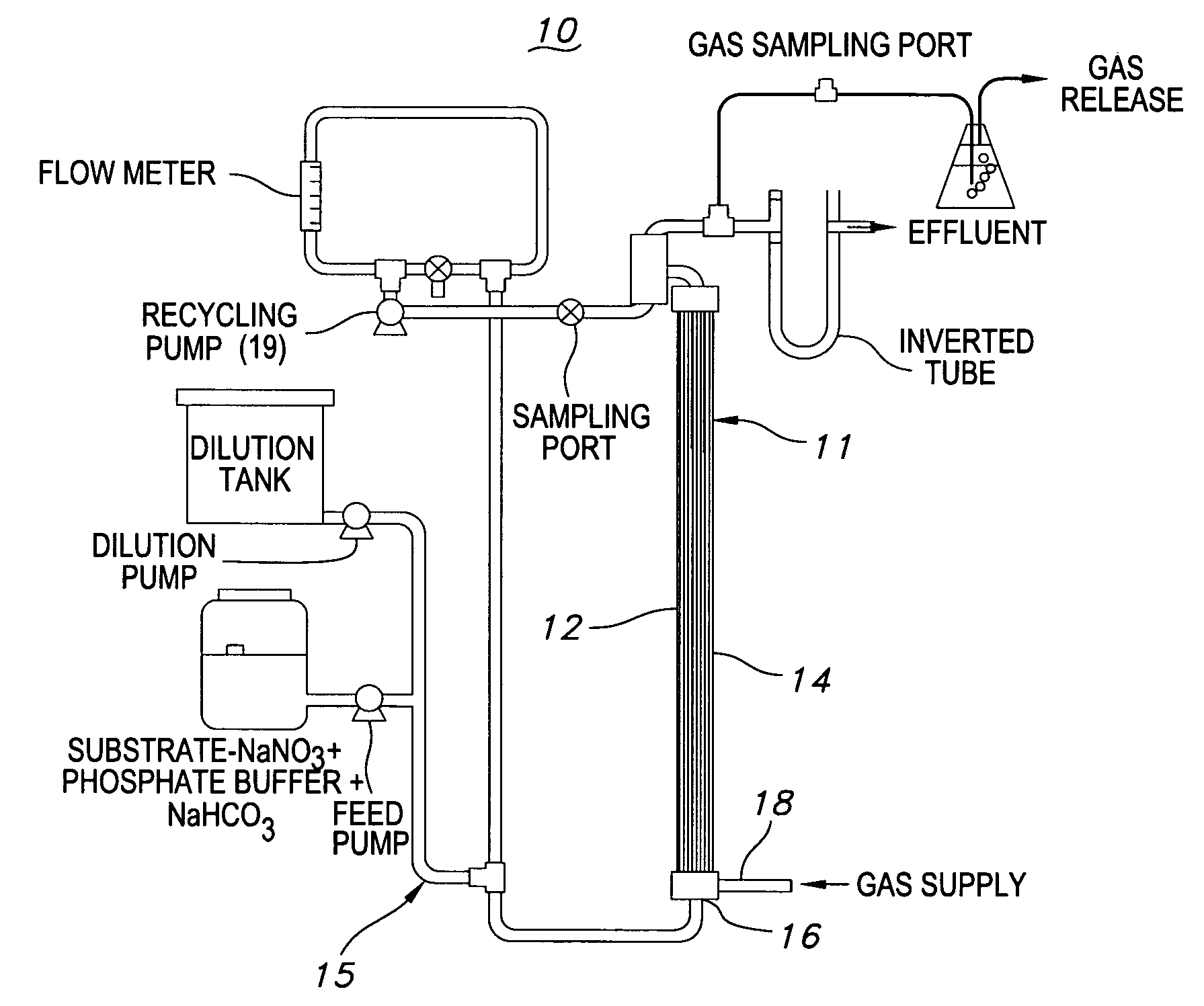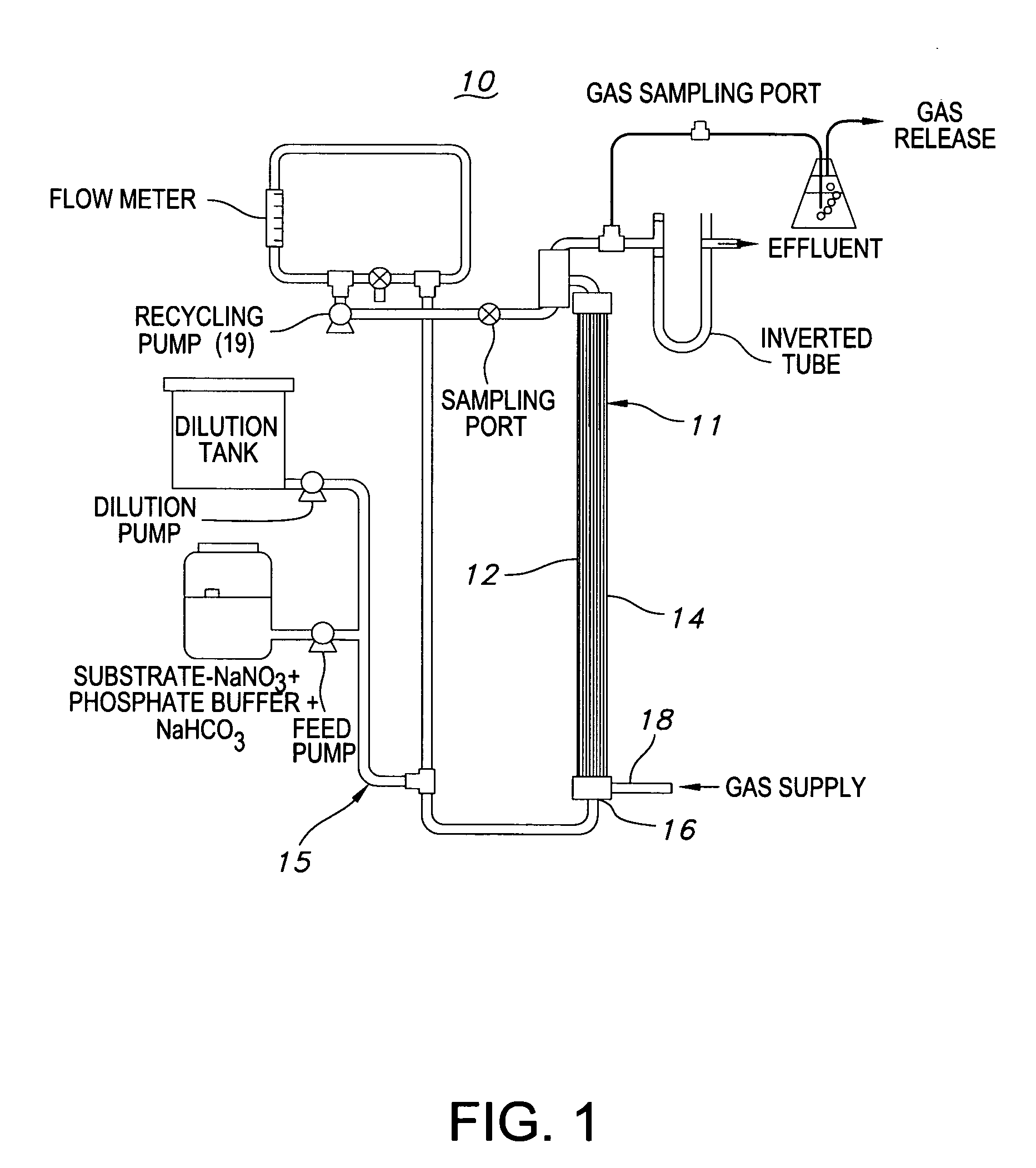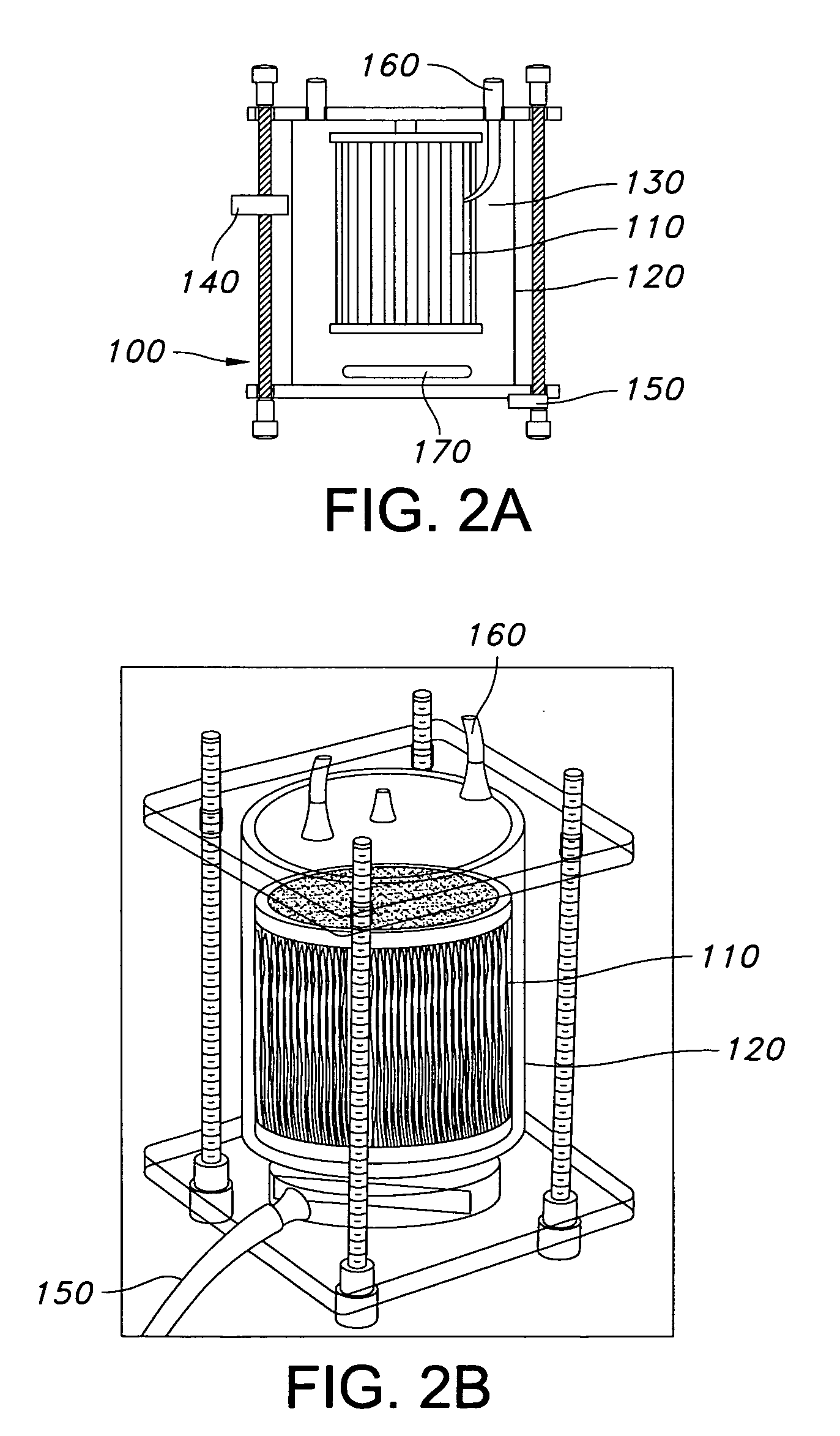Water treatment bioreactor using hollow filaments
- Summary
- Abstract
- Description
- Claims
- Application Information
AI Technical Summary
Benefits of technology
Problems solved by technology
Method used
Image
Examples
example 1
Module with Polyester Hollow Filaments
[0111]A module for use as a bioreactor in a system was prepared as follows. A bundle comprised of 240 polyester hollow filaments, each 43 cm in length and having a 130 μm outer diameter, was sealed using a suitable epoxy into a plastic casing member, according to techniques known in the art, to form a module. The total membrane area was 0.0423 m2. One end of the filaments extended through the epoxy such that the internal bore of each fiber was open and in fluid communication with an inlet port on a cap member placed at the end of the casing. The opposing end of each filament was sealed into the epoxy. Flange members were fitted onto the casing, for coupling the module to a water feed source that is introduced onto the shell side, or external surfaces, of the filaments. In use, the inlet port is coupled to a gas source, for introducing gas to the internal bore of the hollow filaments. An outlet port in the module casing was provided to allow deco...
example 2
Module with Fabric Comprising Polyester Hollow Filaments
[0113]A module for use as a bioreactor in a system was prepared as follows. An aluminum tube having an inner diameter of 2 inches (5.1 cm) was prepared by introducing a series of holes along its length. A sheath of fabric comprised of polyester hollow filaments woven to form a fabric like that depicted in FIG. 6A, and a mesh spacer material were wound around the outer circumference of the tube, according to techniques known in the art, to form a spiral wound module. An epoxy seal was placed along the fabric and mesh outer edges subsequent to winding, to provide an epoxy seal at each end of the module. The MBfR module is approximately 41 inches long and five and one-half inches in diameter. The MBfR module contained approximately 26,800 hollow fibers having 200 micron outer diameter (OD) and with 36 inches of active length (after subtracting length covered by the epoxy-potted ends). The MBfR active surface area was therefore 15....
example 3
Module with Fabric Comprising Polyester Hollow Filaments
[0114]A module for use in a bioreactor system was prepared as follows. A PVC tube having an inner diameter of 2 inches (5.1 cm) was prepared by introducing a series of holes along its length. A sheath of fabric comprised of polyester hollow filaments woven to form the fabric, like that depicted in FIG. 6A, and a mesh spacer material were wound around the outer circumference of the tube, according to techniques known in the art, to form a spiral wound module, where the spacer material was adjacent and separating layers of the polyester fabric. An epoxy seal was placed along the fabric and mesh outer edges prior to winding, to provide an epoxy seal at each end of the module. Flange members were fitted into the epoxy, for coupling the module to a water feed source. The end of each module was trimmed, and a stainless steel cap was secured to one end of the module, the cap having a port for fluid communication between the environmen...
PUM
 Login to View More
Login to View More Abstract
Description
Claims
Application Information
 Login to View More
Login to View More - R&D
- Intellectual Property
- Life Sciences
- Materials
- Tech Scout
- Unparalleled Data Quality
- Higher Quality Content
- 60% Fewer Hallucinations
Browse by: Latest US Patents, China's latest patents, Technical Efficacy Thesaurus, Application Domain, Technology Topic, Popular Technical Reports.
© 2025 PatSnap. All rights reserved.Legal|Privacy policy|Modern Slavery Act Transparency Statement|Sitemap|About US| Contact US: help@patsnap.com



